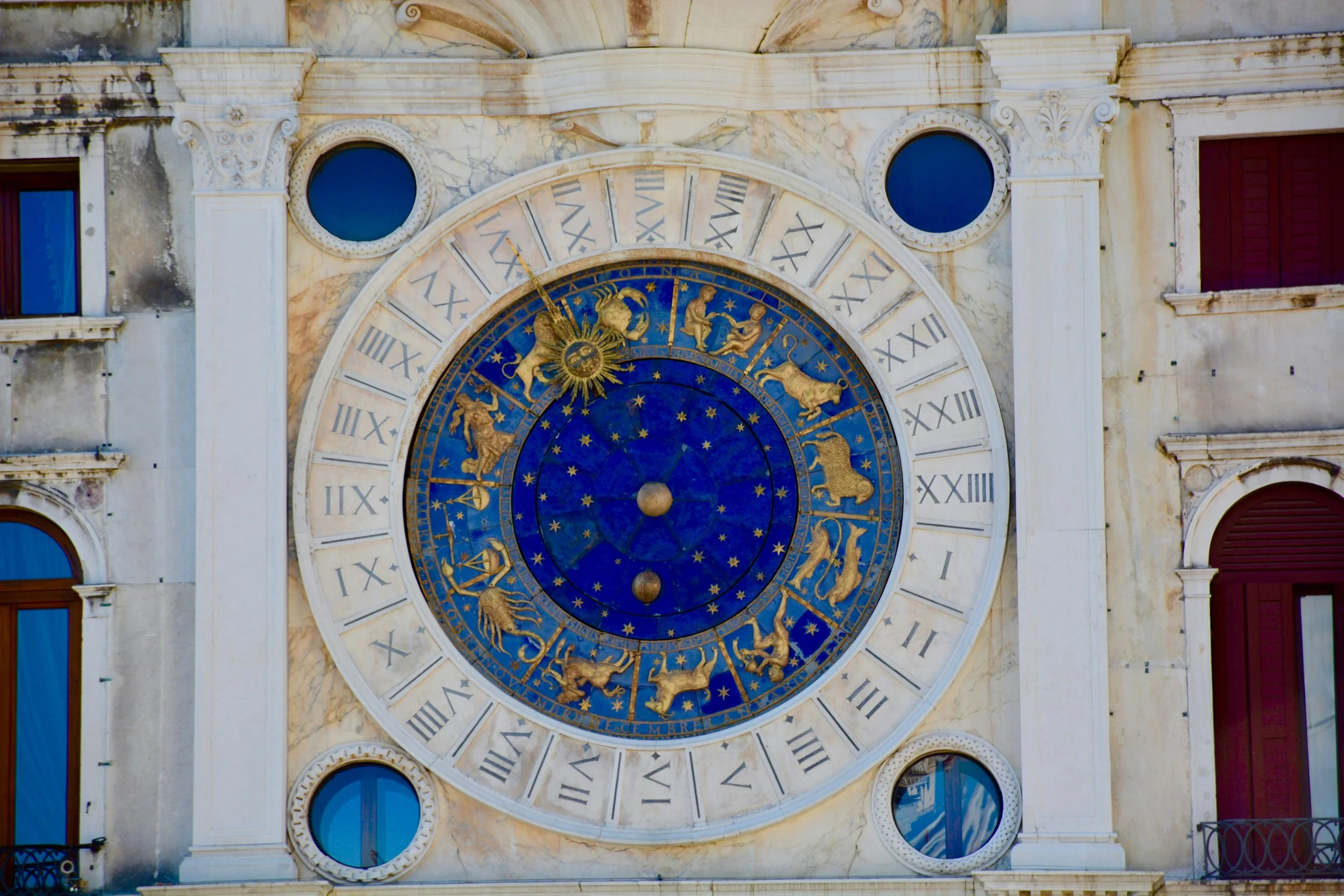What are the different types of Astrology?
St. Mark’s Clocktower (Torre dell´Orologio) in Venice, Italy.
Astrology has been practiced around the world since around the 2nd-3rd millennium BCE.
Unsurprisingly, astrology has been modified by different cultures throughout history. Therefore, there are various interpretations of how it should be practiced. Even specific sects of astrology have some variations within them.
Some of the branches of astrology include:
Western Astrology: Popular in Western countries, derives from a mix of Hellenistic and Babylonian traditions.
Vedic Astrology: Mainly practiced in India, has its origins in Hinduism, and was also influenced by Greek astronomy.
Hellenistic Astrology: Started in Babylon and developed in Hellenized Greek-speaking areas (Greece, Macedonia, parts of Northern and Eastern Africa, and parts of the Middle East.)
Chinese Astrology: Emerged during the Zhou dynasty and became popularized during the Han dynasty. Incorporates elements (wood, fire, Earth, metal, & water) and animals.
Uranian Astrology: A newer type of astrology developed by Friedrich Sieggrün and Alfred Witte, who led the contemporary astrological revival in Germany during the 1920s.
Evolutionary Astrology: Evolutionary Astrology (EA) is a branch of astrology that focuses on the soul's journey across lifetimes and its evolution. It incorporates various branches of astrology, including Hellenistic, Psychological, Karmic, Vedic, Humanistic Astrology, and Astrocartography. There is also an emphasized focus on the lunar nodes, the influence of Pluto in the birth chart as a transformative force, and the use of astrology as a spiritual guide. This is the type of astrology that I primarily practice because it’s the branch that resonates the most.
Astrocartography: While not technically a type of astrology, Astrocartography, often referred to as locational astrology, is considered a sub-discipline of Astrology that merges astrology with maps. How it works is it maps your birth chart against a map of the world to gauge the different types of energies you would be most inclined to experience in different places. Most Astrocartographers, including myself, also use relocated charts, which are recalculated birth charts that move the birth data to a different location. Oftentimes, in a relocated chart, we see a person’s birth chart angles and house placements shift-sometimes dramatically!
I also want to explain the differences between Classical Astrology and Modern Astrology, because there is quite a lot of confusion regarding this. Classical Astrology is primarily rooted in Hellenistic, medieval, and Renaissance astrology (with a heavy emphasis on Hellenistic techniques.) The major differences between these two branches of astrology are the house systems employed and the designated planetary rulers for each zodiac sign. Classical Astrologers mainly use whole sign houses when reading birth charts (keep in mind, some do use quadrant systems like Placidus), whereas Modern Astrologers tend to use a variety of house systems, including Placidus, Koch, and others. When it comes to the planetary rulers, Classical Astrologers exclusively assign the seven classical planets as the rulers of each zodiac sign, while Modern Astrologers do assign the outer planets as zodiac sign rulers. Here’s how all this plays out…
Planetary Rulers in Classical Astrology
Aries – Mars
Taurus – Venus
Gemini – Mercury
Cancer – Moon
Leo – Sun
Virgo – Mercury
Libra – Venus
Scorpio – Mars
Sagittarius – Jupiter
Capricorn – Saturn
Aquarius – Saturn
Pisces – Jupiter
Planetary Rulers in Modern Astrology
Aries – Mars
Taurus – Venus
Gemini – Mercury
Cancer – Moon
Leo – Sun
Virgo – Mercury
Libra – Venus
Scorpio – Pluto
Sagittarius – Jupiter
Capricorn – Saturn
Aquarius – Uranus
Pisces – Neptune

